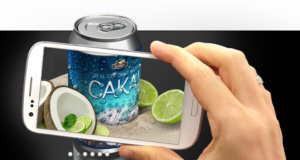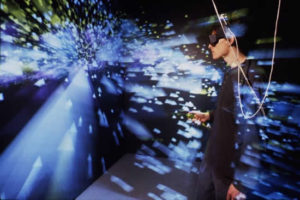Members of the XR (VR, AR and MR) platform:
- NordicHouse
- 11th Dimension
- 1000 realities
- EPIC VR/CreativeStudio
- Na Niby Studio
- Horizon Studio
- Habitat
- Rexton Digital
- Reality Games
- Alvernia Planet
- Instytut Wirtualnej Rzeczywistości
Partners:
- Berrylife
- Mofables
- ART-Tech
- Riot Agency
- Head Trip
- Shapespark
Virtual Reality (VR)
Virtual reality is the creation of a virtual environment presented to our senses in such a way that we experience it as if we were really there. It uses a host of technologies to achieve this goal and is a technically complex feat that has to account for our perception and cognition. It has both entertainment and serious uses. The technology is becoming cheaper and more widespread. We can expect to see many more innovative uses for the technology in the future and perhaps a fundamental way in which we communicate and work thanks to the possibilities of virtual reality.
The definition of virtual reality comes, naturally, from the definitions for both ‘virtual’ and ‘reality’. The definition of ‘virtual’ is near and reality is what we experience as human beings. So the term ‘virtual reality’ basically means ‘near-reality’. This could, of course, mean anything but it usually refers to a specific type of reality emulation.
We know the world through our senses and perception systems. In school we all learned that we have five senses: taste, touch, smell, sight and hearing. These are however only our most obvious sense organs. The truth is that humans have many more senses than this, such as a sense of balance for example. These other sensory inputs, plus some special processing of sensory information by our brains ensures that we have a rich flow of information from the environment to our minds.
Everything that we know about our reality comes by way of our senses. In other words, our entire experience of reality is simply a combination of sensory information and our brains sense-making mechanisms for that information. It stands to reason then, that if you can present your senses with made-up information, your perception of reality would also change in response to it. You would be presented with a version of reality that isn’t really there, but from your perspective it would be perceived as real. Something we would refer to as a virtual reality.
So, in summary, virtual reality entails presenting our senses with a computer generated virtual environment that we can explore in some fashion.
In technical terms…
Answering “what is virtual reality” in technical terms is straight-forward. Virtual reality is the term used to describe a three-dimensional, computer generated environment which can be explored and interacted with by a person. That person becomes part of this virtual world or is immersed within this environment and whilst there, is able to manipulate objects or perform a series of actions.
Augmented Reality (AR)
Augmented reality is the integration of digital information with the user’s environment in real time. Unlike virtual reality, which creates a totally artificial environment, augmented reality uses the existing environment and overlays new information on top of it.
Augmented reality apps are written in special 3D programs that allow the developer to tie animation or contextual digital information in the computer program to an augmented reality “marker” in the real world. When a computing device’s AR app or browser plug-in receives digital information from a known marker, it begins to execute the marker’s code and layer the correct image or images.
AR applications for smartphones typically include global positioning system (GPS) to pinpoint the user’s location and its compass to detect device orientation. Sophisticated AR programs used by the military for training may include machine vision, object recognition and gesture recognition technologies.
Mixed Reality (MR) – The next big paradigm shift
A hybrid of both AR and VR, Mixed Reality (MR) is far more advanced than Virtual Reality because it combines the use of several types of technologies including sensors, advanced optics and next gen computing power. All of this technology bundled into a single device will provide the user with the capability to overlay augmented holographic digital content into your real-time space, creating scenarios that are unbelievably realistic and mind-blowing.
How does it work?
Mixed Reality works by scanning your physical environment and creating a 3D map of your surroundings so the device will know exactly where and how to place digital content into that space – realistically – while allowing you to interact with it using gestures. Much different than Virtual Reality where the user is immersed in a totally different world, Mixed Reality experiences invite digital content into your real-time surroundings, allowing you to interact with them.
The use of transparent lenses, spatial sound and an understanding of your physical environment will allow holograms to look, sound and behave like real objects that are able to interact with the environment around them and also with each other. Take for example the video below of Robots crashing through the walls and firing weapons at the Microsoft Hololens user. Not only mind-blowing but truly a magical experience!
What can Mixed Reality do?
Mixed Reality will not just be another advanced gaming console to play the latest version of Halo or Madden NFL. Instead, it will add a whole new world of interactions, apps, games and experiences we have yet to imagine. The world around you will become an entirely new canvas for you to play, learn, communicate and interact with.



